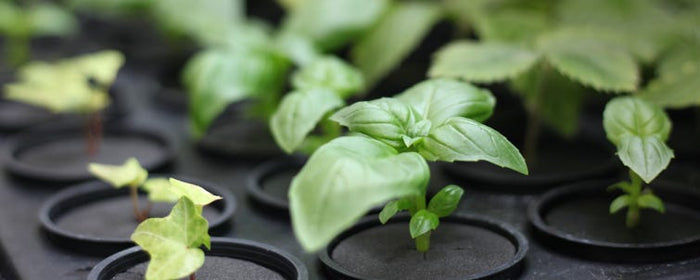
A Beginner’s Guide To CF Control
Your CF and EC tell you the same thing - how strong your feed is.
- Too strong and you can overfeed plants.
- Not strong enough and plants can end up with a nutrient deficiency
EC vs. CF
- CF = Conductivity Factor
- EC - Electrical Conductivity
Both measure the rate of electrical conductivity in your solution. The higher the mineral content, the higher the conductivity rating.
10 CF = 1 EC
- CF divided by 10 = EC
- EC multiplied by 10 = CF
Simples.

Target CF
Most nutrient suppliers give a target CF or EC. BUT they assume your starting CF / EC is 0.
Only pure water has a CF / EC of 0. Water out of your tap contains minerals.
- Soft water is typically CF 2 (EC 0.2)
- Hard Water is typically CF 8 (EC 0.8)
To get your actual target CF:
Step 1: Take a CF reading of your base water
Step 2: Add it to the manufacturer's target CF
| Example | ||
|---|---|---|
| Tap Water CF | Supplier's target CF | Actual target CF |
| 2 | 16 | 18 |
| 5 | 20 | 25 |
Most manufacturers give you a target CF of
- 4 - 10 CF (young plants)
- 10 - 18 CF (established plants)
If you assuming your starting CF is 8 (hard water) or 2 (soft water), your actual CF would be something like:
| Typical CF | ||
|---|---|---|
| Hard Water | Soft Water | |
| Tap water | 8 | 2 |
| 1/4 Strength Feed | 12 | 6 |
| 1/2 Strength Feed | 16 | 10 |
| 3/4 Strength Feed | 20 | 14 |
| Full Strength Feed | 24 | 18 |
However, you must remember that your ideal CF does vary....
...think of your CF as your water to nutrient ratio.
- If plants are hungry, they need more nutrients
- If they're thirsty, they need more water
The problem is, lots of things can make plants hungrier or thirstier:
- Size of plants
- Type of plants
- Growing method
- Temperature
- Season
- Water hardness
This makes it tough to pinpoint your exact CF.
That's why you need to check your CF often. Take a reading afew days after plants have been exposed.
The chances are, your CF will drift up or down and you need to respond.
How to Check your CF
When you fist mix your solution, here's how you do it.
step 1
For an easy life, you'll want a Bluelab Truncheon because it's factory calibrated. If you use an Accuread pH Meter, you'll need to calibrate it yourself.
step 2
Leave a bucket of tap water to dechlorinate for 24 hours, then use a CF meter to take a background reading.
Add your background CF to your target CF to get your actual target CF.
step 3
If adding PK boosters, add them to your water first.
Next, add all other nutrients and aditives (at the recommended rate).
step 4
Take another CF reading - if it's too high, add water to bring it back down.
| Did you know |
|---|
| Every 1oC rise in nutrient temperature increases your CF by around 2%. Make sure you check your nutrient strength at the same time of day. |
Correcting your CF
In an ideal world, your CF will stay constant as plants feed. If this happens, you've got your water to nutrient ratio spot on.
If your CF changes, don't panic! Act fast to fix the problem quickly.
If your CF drops
Plants have used more nutrients than expected (hungrier).
Add more nutrients as soon as you can.
If your CF rises
Plants have used more water than expected, leaving nutrients behind (thirstier).
This typically happens in summer, when your grow room's warmer.
Add pH adjusted dechlorinated water to bring your CF back down again. Make sure you reduce your CF when you next feed plants.
Warning signs
Keep an eye out for signs of overfeeding and underfeeding.
If underfeeding, you may notice:
-
Potassium:yellowing larger leaves (from tips and margins, towards main leaf vein)
-
Nitrogen: yellowing larger leaf tips, that spreads towards the leaf stem.
-
Phosphorus: dark purple tinge on large, green leaves and a purpling stem
If overfeeding, you may notice:
- Leaves that are too small
- Dark, dull leaves
- Downwards curling on leaves









